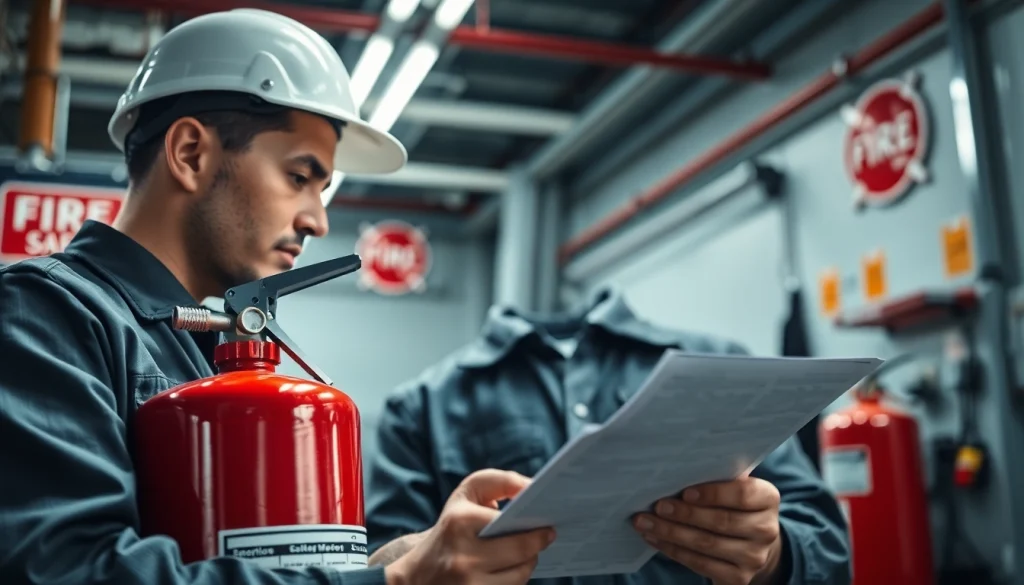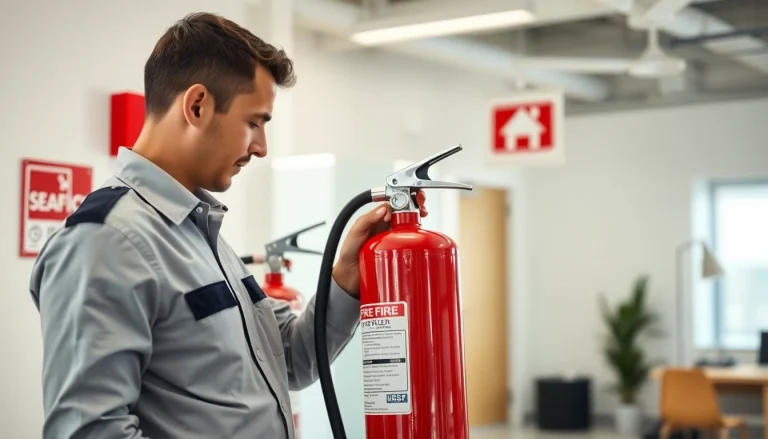
Understanding Fire Extinguisher Servicing
Fire extinguishers play a critical role in safeguarding lives and property from fire hazards. However, their effectiveness heavily relies on proper maintenance. Fire extinguisher servicing is not just about having these devices on hand; it’s about ensuring they function properly when needed. This article delves into the complexities of fire extinguisher servicing, covering everything from what servicing entails to best practices, common issues, regulatory compliance, and selecting a service provider.
What is Fire Extinguisher Servicing?
Fire extinguisher servicing encompasses a series of actions aimed at ensuring that fire extinguishers function correctly and comply with safety regulations. This includes inspection, maintenance, and testing. Regular servicing helps to identify potential issues before they become emergencies and ensures that extinguishers are ready for use in the event of a fire. Servicing can be performed by trained professionals or, in some cases, by building managers who have undergone the necessary training.
The Importance of Regular Maintenance
Regular maintenance of fire extinguishers is crucial for several reasons:
- Safety Assurance: Properly maintained extinguishers can effectively put out fires, leading to better safety outcomes.
- Compliance: Adhering to local fire codes, which often mandate inspection and maintenance, helps prevent legal penalties.
- Reliability: A properly serviced extinguisher is less likely to malfunction during a fire, thus increasing the chances of containing the fire effectively.
- Cost Efficiency: Regular maintenance can extend the life of the extinguisher and prevent costly replacements.
Key Components of Fire Extinguisher Inspection
Inspection of fire extinguishers comprises several key components:
- Visual Inspection: Ensure that the extinguisher is accessible, the nozzle is not obstructed, and the pressure gauge is in the operable zone.
- Physical Condition: Check for signs of corrosion, leaking fluids, or any dents and damage to the outer casing.
- Tags and Labels: Verify that inspection tags are up to date and that instructions are visible and legible.
- Weight Check: Weigh the extinguisher to confirm that it is full. Fire extinguishers can lose pressure over time, affecting their performance.
Best Practices for Fire Extinguisher Maintenance
Monthly Inspection Checklist
Monthly inspections are straightforward yet essential. Here’s a checklist that should be followed:
- Check the pressure gauge to ensure it is in the green zone.
- Verify the location of the extinguisher, ensuring it is easily accessible and mounted securely.
- Look for physical damage or corrosion.
- Ensure the label instructions are clear and legible.
- Confirm the inspection tag date and initial the tag after completing the inspection.
Annual Servicing Requirements
In addition to monthly checks, fire extinguishers require a detailed servicing and maintenance check once a year. This typically includes:
- Comprehensive Evaluation: A certified technician should conduct a more thorough examination than those performed in monthly inspections.
- Internal Inspection: Many extinguishers require a disassembly for an internal check of the mechanisms and materials, particularly if they have not been serviced in several years.
- Recharging: If any extinguishers have been used, they must be recharged immediately.
Understanding the Six-Year Recharge Rule
According to the National Fire Protection Association (NFPA), certain types of fire extinguishers must undergo a comprehensive maintenance check and recharge every six years. This helps to:
- Ensure that the extinguisher has not lost its chemical effectiveness.
- Identify any mechanical issues that could hinder operation.
- Replace any aging components that may cause the extinguisher to malfunction.
Common Issues and Solutions
Identifying Fire Extinguisher Malfunctions
Some common malfunctions that can occur include:
- Pressure gauge reading low, indicating a need for recharge.
- Visible corrosion or damage to the extinguisher body.
- Nozzle obstructions, which can prevent the output of extinguishing agent.
Correcting these issues typically involves professional servicing, including recharging or refilling, cleaning, or replacing the extinguisher entirely depending on the extent of the damage.
Common Signs of Expiry
Fire extinguishers can have a limited life span, often ranging from 5 to 15 years dependent on type, manufacturer guidelines, and maintenance practices. Signs that extinguishers may need replacement include:
- Expiration date has passed.
- Physical damage or corrosion is visible.
- Failure to hold pressure.
- Internal or external components are worn or broken.
How to Handle Non-Operational Extinguishers
If an extinguisher is deemed non-operational, the following steps should be undertaken:
- Remove the extinguisher from circulation to prevent misuse during emergencies.
- Contact a professional service for evaluation and repair or replacement.
- Document the situation as part of your records for compliance and auditing purposes.
Regulatory Compliance in Fire Safety
Understanding NFPA and Local Fire Codes
Compliance with the National Fire Protection Association (NFPA) standards and local fire codes is essential. NFPA 10 outlines how fire extinguishers should be installed, inspected, and maintained:
- Extinguishers must be inspected monthly and serviced annually by a qualified technician.
- They should be located in clearly marked and accessible areas.
- Records of inspections and maintenance must be kept for reference and compliance verification.
Documentation and Record Keeping
Keeping accurate records of fire extinguisher inspections and servicing is crucial. Documentation should include:
- The dates of inspections and servicing.
- The names and credentials of the technicians who performed the work.
- Details of any repairs or replacements made.
- Expiration dates and recharging schedules.
These records enhance accountability and can be vital during fire safety audits or inspections.
Annual Audits and Inspections
An annual audit of fire safety equipment, including extinguishers, allows organizations to evaluate compliance with safety standards and identify areas for improvement. This audit should assess:
- Current inventory of extinguishers and their locations.
- Condition and operational status of all extinguishers.
- Overall adherence to fire safety protocols within the facility.
Choosing a Fire Extinguisher Service Provider
Criteria for Selecting a Qualified Technician
When selecting a service provider, consider the following:
- Certification: Technicians should be certified and knowledgeable about local fire codes and safety regulations.
- Experience: Look for providers with a history of reliable service and positive customer reviews.
- Services Offered: Ensure they provide a comprehensive range of services, including installation, inspections, maintenance, and emergency services.
Evaluating Service Contracts
Before entering a service contract, evaluate:
- Scope of Services: Understand what is included in the contract (e.g., frequency of inspections, types of extinguishers covered).
- Cost: Compare costs with other service providers to ensure competitiveness without compromising quality.
- Term Length: Consider the length of the contract and any options for renewal.
Long-Term Maintenance Planning
Effective long-term maintenance planning involves:
- Establishing a schedule for regular inspections and maintenance that aligns with local laws and NFPA standards.
- Setting aside a budget for unexpected repairs or replacements.
- Training staff on fire safety and the importance of maintaining functional fire extinguishers.
Overall, protecting your property and occupants requires diligence and commitment to safety. By prioritizing fire extinguisher servicing and maintenance, you ensure that your fire safety measures are robust, effective, and compliant, potentially saving lives and minimizing losses during emergencies.





